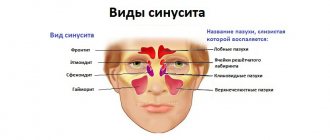pharmachologic effect
The drug Dynamico is used to treat erectile dysfunction . The active substance inhibits PDE-5. Due to increased blood flow to the penis, the active substance is able to restore impaired erectile function with provided sexual stimulation.
Erection at the physiological level is based on the release of NO - nitric oxide in the cavernous bodies as a result of excitement. NO is able to activate guanylate cyclase, which increases the level of cyclic guanosine monophosphate (cGMP), which relaxes smooth muscle fibers in the blood vessels, which leads to increased blood flow to the cavernous bodies in the penis.
Sildenafil is a selective inhibitor of cGMP (specific PDE-5), under the influence of which cGMP breaks down in the cavernous bodies in the penis. The active substance does not have a direct effect on the relaxation of smooth muscles in the corpora cavernosa, but it is able to increase blood flow to the penis and enhance the ability of NO to relax smooth muscles. During sexual stimulation, activation of the NO-cGMP chain is observed, which inhibits PDE-5, which increases the level of cGMP in the cavernous bodies. The above pharmacological effect is observed only with sexual stimulation .
Sildenophil is more active than all known PDE isoenzymes: it is 10 times more active than PDE-6, 80 times more active than PDE-1, 700 times more active than PDE-2, 4, 7, 11. The active substance is 4 more selective in comparison with PDE-3 thousand times, which is important because PDE-3 is the main enzyme in the regulation of cardiac contractility.
Sildenafil is characterized by a mild hypotensive effect , which has a short-term effect and has virtually no clinical significance when treated with the drug in doses recommended by the manufacturer. The hypotensive effect is due to a vasodilating effect caused by an increased content of cGMP in smooth muscle fibers in the vascular wall.
Pharmacodynamics and pharmacokinetics
Suction process
Rapidly absorbed after oral administration. When taken on an empty stomach, the maximum level is recorded after 0.5-2 hours. Bioavailability depends on food intake: on an empty stomach - 41%, after eating - 20-40% (reached within 1.5-3 hours).
Distribution
The VSS indicator is 105 liters. Active metabolites and Sildenafil itself are bound to plasma proteins by 90% of the dose taken. The indicator is not dose-dependent.
Metabolism
metabolic pathway is carried out with the participation of the microsomal isoenzyme CYP2C9, and the main one is CYP3A4. The most important active circulating metabolite is the N-demethyl metabolite, which exhibits activity in relation to PDE equal to 50% of the activity of Sildenafil. Its concentration reaches 40% of the level of Sildenafil. The half-life of N-demethyl metabolite is 4 hours.
Removal
The clearance of the active substance is 41 l/h. The half-life is 3-5 hours. Inactive metabolites are excreted 13% through the renal system and 80% through the intestines.
Special group of patients
Compared with patients 18-45 years old, in people over 65 years old, the Cmax is 90% higher, which is explained by the reduced clearance of Sildenafil. The level of active substance not bound to plasma proteins is 40%. With moderate pathology of the renal system, the pharmacokinetics do not change (when taking 50 mg of the drug). With cirrhotic damage to the hepatic system, Cmax and AUC increase by 47 and 84%, respectively.
Dynamico
A drug for the treatment of erectile dysfunction, a PDE5 inhibitor. Restores impaired erectile function under conditions of sexual stimulation by increasing blood flow in the penis.
The physiological mechanism of erection involves the release of nitric oxide (NO) in the corpus cavernosum due to sexual arousal. NO activates the enzyme guanylate cyclase, which leads to increased concentrations of cyclic guanosine monophosphate (cGMP). In turn, cGMP causes relaxation of the smooth muscles of the blood vessels and, accordingly, blood flow into the cavernous body of the penis.
Sildenafil is a selective inhibitor of cGMP-specific PDE5, which causes the breakdown of cGMP in the corpus cavernosum of the penis. It does not have a direct relaxing effect on the smooth muscle of the corpus cavernosum, but it enhances the relaxing effect of nitric oxide on this tissue and increases blood flow in the penis. When the NO-cGMP chain is activated, which is observed during sexual stimulation, inhibition of PDE5 leads to an increase in cGMP in the corpus cavernosum. The pharmacological effect is achieved only in the presence of sexual stimulation.
The activity of sildenafil against PDE5 exceeds the activity against other known phosphodiesterase isoenzymes: PDE6 - 10 times; PDE1 - more than 80 times; PDE2 - PDE4, PDE7-PDE11 - more than 700 times. Sildenafil is 4000 times more selective for PDE5 compared to PDEZ, which is of great importance since PDEZ is one of the key enzymes in the regulation of myocardial contractility.
Sildenafil has a mild and short-term hypotensive effect, in most cases without clinical manifestations when taken in recommended doses. The hypotensive effect is associated with the vasodilating effect of sildenafil due to an increase in the content of cGMP in the smooth muscle of the blood vessels.
Pharmacokinetics
Suction
After oral administration, it is quickly absorbed. Cmax in blood plasma when taken on an empty stomach is achieved within 0.5-2 hours, bioavailability averages 41% (25-63%). When taken with food, Cmax is reduced by 20-40% and is achieved after 1.5-3 hours.
Distribution
The apparent Vd at equilibrium is 105 l. The binding of sildenafil and its main active metabolite to plasma proteins is 96% of the administered dose and is not dose-dependent.
Metabolism
Sildenafil is metabolized mainly by the CYP3A4 (main pathway) and CYP2C9 (additional pathway) liver microsomal isoenzymes. The main circulating active metabolite is the N-demethyl metabolite, whose phosphodiesterase activity is 50% of the activity of sildenafil, and its plasma concentration reaches 40% of the concentration of sildenafil. N-demethyl metabolite undergoes further metabolism with T1/2 4 hours.
Removal
The total clearance of sildenafil is 41 l/h. T1/2 of sildenafil is 3-5 hours. Inactive metabolites are excreted by the intestines (80%) and kidneys (13%).
Pharmacokinetics in special clinical situations
In patients over 65 years of age, the Cmax of sildenafil and its active metabolite is increased by approximately 90% compared to patients 18-45 years of age due to reduced clearance of sildenafil. The concentration of sildenafil in blood plasma, not bound to proteins, is 40%.
In patients with moderate renal failure (creatinine clearance 30-80 ml/min), the pharmacokinetics of sildenafil does not change when taking 50 mg, and Cmax and AUC for the N-demethyl metabolite are increased by 73% and 126%, respectively. In patients with severe renal failure (creatinine clearance less than 30 ml/min), Cmax and AUC are increased by 88% and 100%, respectively, Cmax and AUC of N-demethyl metabolite are increased by 79% and 200%, respectively.
In patients with liver cirrhosis (Child-Pugh classes A and B), Cmax and AUC were increased by 47% and 84%, respectively.
Contraindications
- taking Ritonavir ;
- individual hypersensitivity;
- patients suffering from loss of vision in one eye due to optical ischemic anterior neuropathy of non-arterial origin (regardless of the influence of a PDE-5 inhibitor);
- age limit – up to 18 years of age;
- female;
- intake of organic nitrates, NO donors;
- severe pathology of the hepatic system;
- degenerative changes in the retina of hereditary origin (for example, retinitis pigmentosa ).
The medication is not prescribed to persons for whom sexual activity is undesirable:
- life-threatening arrhythmias;
- heart failure;
- arterial hypertension;
- arterial hypotension;
- unstable form of angina;
- myocardial infarction;
- cerebrovascular accidents.
Relative contraindications:
- obstructive lesion of the left ventricular outflow tract;
- multiple system atrophy syndrome;
- obstructive hypertrophic cardiomyopathy ;
- aortic stenosis;
- multiple myeloma;
- priapism;
- anatomical deformation of the shape of the penis;
- galactose-glucose malabsorption;
- lactose deficiency;
- lactose intolerance;
- leukemia;
- taking alpha-blockers.
Dynamico
To diagnose erectile dysfunction, determine its possible causes and select adequate treatment, it is necessary to obtain a complete medical history and conduct a thorough physical examination. Erectile dysfunction treatments should be used with caution in patients with anatomical deformation of the penis (angulation, cavernous fibrosis, Peyronie's disease), or in patients with risk factors for priapism (sickle cell anemia, multiple myeloma, leukemia) (see section "Caution" ).
During post-marketing studies, cases of prolonged erection and priapism have been reported. If an erection persists for more than 4 hours, you should immediately seek medical help. If treatment for priapism is not carried out immediately, it can lead to damage to the tissue of the penis and irreversible loss of potency.
Medicines intended to treat erectile dysfunction should not be prescribed to men for whom sexual activity is undesirable.
Sexual activity poses a certain risk in the presence of heart disease, so before starting any therapy for erectile dysfunction, the doctor should refer the patient for an examination of the condition of the cardiovascular system. Sexual activity is not advisable in patients with heart failure, unstable angina, myocardial infarction or stroke in the last 6 months, life-threatening arrhythmias, hypertension (BP >170/100 mmHg) or hypotension (BP <90/50 mmHg) .). Taking sildenafil in such patients is contraindicated (see section "Contraindications"). Clinical studies showed no difference in the incidence of myocardial infarction (1.1 per 100 people per year) or the incidence of death from cardiovascular diseases (0.3 per 100 people per year) in patients receiving sildenafil compared with patients receiving placebo.
Cardiovascular complications
During post-marketing use of sildenafil for the treatment of erectile dysfunction, adverse events such as severe cardiovascular complications (including myocardial infarction, unstable angina, sudden cardiac death, ventricular arrhythmia, hemorrhagic stroke, transient ischemic attack, hypertension and hypotension) have been reported. ), which had a temporary association with the use of sildenafil. Most of these patients (but not all of them) had risk factors for cardiovascular complications. Many of these adverse events occurred shortly after sexual activity and some of them occurred after taking sildenafil without subsequent sexual activity. It is not possible to establish a direct connection between the observed adverse events and these or other factors.
Hypotension
Sildenafil has a systemic vasodilating effect, leading to a transient decrease in blood pressure. which is not clinically significant and does not lead to any consequences in most patients. However, before prescribing the drug, the physician must carefully assess the risk of possible undesirable manifestations of the vasodilating effect in patients with relevant diseases, especially against the background of sexual activity. Increased susceptibility to vasodilators is observed in patients with obstruction of the left ventricular outflow tract (aortic stenosis, hypertrophic obstructive cardiomyopathy), as well as with the rare syndrome of multiple system atrophy, manifested by severe dysregulation of blood pressure from the autonomic nervous system.
Since the combined use of sildenafil and alpha-blockers can lead to symptomatic hypotension in some sensitive patients, the drug should be prescribed with caution to patients taking alpha-blockers (see section "Interaction with other drugs"). To minimize the risk of developing postural hypotension in patients taking α-blockers. Sildenafil should be started only after hemodynamic parameters have stabilized in these patients. You should also consider the advisability of reducing the initial dose of sildenafil (see section "Dosage and Administration"). The doctor should inform patients about this. what actions should be taken if symptoms of postural hypotension occur.
Visual impairment
In rare cases, non-arteritic anterior ischemic optic neuropathy (NAION), a rare condition and cause of vision loss or reduction, has been reported during post-marketing use of all PDE5 inhibitors, including sildenafil. Most of these patients had risk factors, in particular: a decrease in the ratio of the diameters of the excavation and the optic disc (“congestive disc”), age over 50 years. diabetes mellitus, hypertension, coronary heart disease, hyperlipidemia and smoking. An observational study assessed whether recent use of the PDE5 inhibitor class of drugs was associated with acute onset of NPINSID. Results indicate an approximately 2-fold increase in the risk of NPINSID within 5 half-lives of PDE5 inhibitor use. According to the published literature, the annual incidence of NPINSID is 2.5-1.8 cases per 100,000 men aged ≥50 years in the general population. In case of sudden loss of vision, patients should be advised to stop sildenafil therapy and consult a doctor immediately. Persons who have already had a case of NPINS. have an increased risk of relapse of NPINSID. Therefore, the physician should discuss this risk with such patients, as well as discuss with them the potential for adverse effects from PDE5 inhibitors. PDE5 inhibitors. including sildenafil, should be used with caution in such patients and only in situations where the expected benefit outweighs the risk. In patients with episodes of NPINS with loss of vision in one eye, sildenafil is contraindicated (see section "Contraindications").
A small number of patients with hereditary retinitis pigmentosa have genetically determined disorders of retinal phosphodiesterase function. There is no information on the safety of the drug in patients with retinitis pigmentosa, therefore sildenafil should not be used in such patients (see section “Contraindications”).
Hearing impairment
Some post-marketing and clinical studies have reported cases of sudden deterioration or loss of hearing associated with the use of all PDE5 inhibitors. including sildenafil. Most of these patients had risk factors for sudden deterioration or loss of hearing. A cause-and-effect relationship between the use of PDE5 inhibitors and sudden hearing loss or deterioration has not been established. If there is a sudden deterioration in hearing or hearing loss while taking sildenafil, you should consult your doctor immediately.
Bleeding
Sildenafil enhances the antiplatelet effect of sodium nitroprusside, a nitric oxide donor, on human platelets in
vitro .
There are no data on the safety of sildenafil in patients with a tendency to bleeding or exacerbation of gastric and duodenal ulcers, so the drug should be used with caution in these patients (see section "With caution"). The incidence of epistaxis in patients with pulmonary hypertension associated with diffuse connective tissue diseases was higher (sildenafil 12.9%, placebo 0%) than in patients with primary pulmonary arterial hypertension (sildenafil 3.0%, placebo 2.4% ). Patients receiving sildenafil in combination with a vitamin K antagonist had a higher incidence of epistaxis (8.8%) than patients not taking a vitamin K antagonist (1.7%).
Use in conjunction with other means of treating erectile dysfunction
The safety and effectiveness of sildenafil in combination with other PDE5 inhibitors or other drugs for the treatment of pulmonary arterial hypertension containing sildenafil, or other drugs for the treatment of erectile dysfunction, therefore the use of such combinations is not recommended (see section "Contraindications").
Side effects
Organs of vision:
- disruption of tear flow;
- damage to the conjunctiva;
- color vision impairment;
- disturbance of visual perception;
- transient form of chromatopsia ;
- blurred vision;
- increased perception of light;
- redness of the sclera;
- occlusion of blood vessels in the retina;
- ischemic form of anterior optic neuropathy;
- narrowing of visual fields;
- pain in the eyeballs.
Heart, vascular system:
- atrial fibrillation;
- feeling of rapid heartbeat;
- sudden coronary death;
- unstable form of angina;
- ventricular arrhythmias;
- myocardial infarction;
- instability of blood pressure .
Nervous system:
- transient ischemic attack;
- fainting;
- stroke;
- hypoesthesia;
- seizures (including recurrent ones);
- increased drowsiness;
- dizziness;
- migraine headaches.
Other reactions:
- deafness;
- noise in ears;
- vertigo;
- nosebleeds ; _
- nasal congestion;
- vomit;
- dyspeptic disorders;
- dry mouth;
- fast fatiguability;
- chest pain;
- priapism;
- prolonged erection;
- skin rashes;
- nausea;
- Lyell's syndrome.
Dynamico tablets, instructions for use (Method and dosage)
The medication must be taken 1 hour before the intended sexual activity.
Instructions for use Dynamico 50 mg: 1 tablet per day. The dosage can be reduced to 25 mg or increased to 100 mg, taking into account the tolerability and effectiveness of the drug.
For mild/moderate pathology of the renal system, no adjustment of the dosage regimen is required. In case of severe renal pathology, treatment begins with taking 25 mg of Sildenafil with a gradual increase to 50 or 100 mg if well tolerated. The first dose for older men is 25 mg, with gradual increases as needed and well tolerated.
Treatment also begins with 25 mg for mild/compensated pathology of the hepatic system, gradually increasing the dose to 50-100 mg as needed. A similar regimen should be followed for patients taking drugs from the alpha-blocker group.
Interaction
The concentration of Sildenafil in the blood increases when treated with inhibitors of the isoenzymes CYP2C9 and CYP3A4:
- Erythromycin;
- Ketoconazole;
- Cimetidine.
Such patients are recommended to take 25 mg of Sildenafil.
The maximum concentration of Sildenafin increases by 300% and the AUC by 1000% with simultaneous use of Ritonavir. These indicators also increase during treatment with Saquinavir. Dynamico does not affect the pharmacokinetics of Saquinavir and Ritonavir. Sildenafil is able to enhance the antiplatelet effect of Nitroprusside Na. It is possible to develop severe arterial hypotension when taking Nicorandil , which contains a nitrate component. There is a mutual increase in effects (possible death) when taking nitrates and other NO donors. The drug Dynamic may enhance the hypotensive effect of ACE inhibitors, beta blockers and medications of the CCB group. There is an increase in the activity of hypoglycemic drugs . It is possible to develop orthostatic hypotension and a pronounced drop in blood pressure when taking the alpha-blocker Doxazosin . The concentration of the active substance Sildenafil increases if you take the tablets with grapefruit juice.
Drug interactions
The effect of sildenafil may vary depending on the combined use of Dynamiko tablets with different medications. Before use, consult a specialist to eliminate the risk of severe adverse reactions. It is necessary to take the drug with caution with the following medications:
- Ketoconazole, Erythromycin, Cimetidine, Ritonavir, Saquinavir. These medications increase the concentration of sildenafil, and its dose should not exceed 25 mg per day.
- Sodium nitroprusside. When taken simultaneously, the antiplatelet effect of nitroprusside is enhanced.
- Nicorandil. The presence of a sodium component in the drug can lead to severe arterial hypotension.
- Other nitric oxide donors (Arginine, Agmatine). Combination use can be fatal.
- Antihypertensive drugs (calcium channel blockers, beta blockers, ACE inhibitors). When combined with sildenafil, the hypotensive effect is enhanced.
- Hypoglycemic drugs. The combination enhances the hypoglycemic effect, and a sharp decrease in blood sugar is possible.
- Grapefruit juice. Increases the concentration of sildenafil in the blood.
special instructions
A thorough examination is required to determine the true causes of erectile dysfunction. Patients taking other medications, as well as those suffering from serious diseases of the heart and vascular system, are advised to assess the risk of developing negative reactions associated with sexual activity. Sildenafil is able to gradually lower blood pressure. In patients with rare multiple atrophy syndrome and obstructive lesions of the left ventricle, the hypotensive effect is more pronounced. Most negative reactions from the heart and vascular system develop immediately after sexual intercourse or a certain time after it. It is extremely rare that adverse reactions occur before sexual intercourse. Concomitant use of other medications prescribed for erectile dysfunction .
The medication is used with caution by persons suffering from various diseases that predispose to the development of priapism:
- multiple myeloma;
- sickle cell anemia;
- leukemia (bone marrow disease).
In case of anatomical deformation of the penis (against the background of cavernous fibrosis , angulation , Peyron's disease ), Dynamic is prescribed with caution. If visual perception disorders develop, immediate consultation with your doctor is required. Taking more than 200 mg of the active substance does not affect the effectiveness, but increases the severity and frequency of dose-dependent negative reactions. It is recommended to refrain from driving a vehicle.
Dynamico Forward, 50 mg, films, dispersible in the oral cavity, 1 pc.
To diagnose erectile dysfunction, determine its possible causes and select adequate treatment, it is necessary to obtain a complete medical history and conduct a thorough physical examination. Treatments for erectile dysfunction should be used with caution in patients with anatomical deformation of the penis (angulation, cavernous fibrosis, Peyronie's disease) or patients with risk factors for priapism (sickle cell anemia, multiple myeloma, leukemia).
In the post-marketing period, cases of prolonged erection and priapism have been reported. If an erection persists for more than 4 hours, you should seek medical help. If priapism therapy is not carried out in a timely manner, this can lead to damage to the tissue of the penis and irreversible loss of potency. Medicines intended to treat erectile dysfunction should not be used in men for whom sexual activity is undesirable.
Sexual activity poses a certain risk in the presence of heart disease, therefore, before starting any therapy for erectile dysfunction, the doctor should refer the patient to an examination of the cardiovascular system. Sexual activity is undesirable in patients with heart failure, unstable angina, myocardial infarction or stroke in the last 6 months, life-threatening arrhythmias, arterial hypertension (BP more than 170/100 mm Hg) or hypotension (BP less than 90/50 mm Hg. Art.).
There was no difference in the incidence of myocardial infarction (1.1 per 100 people per year) or the incidence of cardiovascular death (0.3 per 100 people per year) in patients receiving sildenafil compared with patients receiving placebo.
Cardiovascular complications
During post-marketing use of sildenafil for the treatment of erectile dysfunction, adverse events such as serious cardiovascular events (including myocardial infarction, unstable angina, sudden cardiac death, ventricular arrhythmia, hemorrhagic stroke, transient ischemic attack, hypertension and hypotension) have been reported. ), which had a temporary association with the use of sildenafil. Most of these patients, but not all of them, had risk factors for cardiovascular complications. Many of these adverse events occurred shortly after sexual activity, and some of them occurred after taking sildenafil without subsequent sexual activity. It is not possible to establish a direct connection between the observed undesirable or other factors.
Hypotension
Sildenafil has a systemic vasodilating effect, leading to a transient decrease in blood pressure, which is not a clinically significant phenomenon and does not lead to any consequences in most patients. However, before using sildenafil, the physician should assess the risk of developing possible undesirable manifestations of the vasodilating effect in patients with relevant diseases, especially against the background of sexual activity. Increased susceptibility to vasodilators is observed in patients with obstruction of the outflow tract of the left ventricle of the heart (aortic stenosis, hypertrophic obstructive cardiomyopathy), as well as with the rare syndrome of multiple system atrophy, manifested by severe dysregulation of blood pressure from the autonomic nervous system.
Caution should be exercised when using sildenafil concomitantly with alpha-blockers, because Symptomatic hypotension may develop in selected sensitive patients. To minimize the risk of developing postural hypotension in patients taking alpha-blockers, the use of DYNAMICO FORWARD should be started only after hemodynamic stability has been achieved. The advisability of using other dosage forms of sildenafil at a dose of 25 mg in the initial stages should also be considered. The physician should inform the patient what actions to take if symptoms of postural hypotension occur.
Visual impairment
In the post-marketing period, rare cases of the development of NPINSN, a rare disease and the cause of decreased or loss of vision, have been reported when using PDE5 inhibitors, incl. sildenafil. Most of these patients had risk factors such as optic disc excavation, age over 50 years, diabetes mellitus, hypertension, coronary artery disease, hyperlipidemia, and smoking. An observational study assessed whether recent use of drugs of the PDE5 inhibitor class was also associated with acute onset of NPINSID. The results indicate an approximately 2-fold increase in the risk of NPINI within 5 T1/2 after use of a PDE5 inhibitor. Published literature estimates the annual incidence of NPINSID to be 2.5–11.8 cases per 100,000 men aged ≥50 years in the general population. In case of sudden loss of vision, patients should be advised to stop sildenafil therapy and consult a doctor immediately. Individuals who have already had a case of NPIND have an increased risk of recurrent NPIND. Therefore, the physician should discuss this risk with such patients, as well as discuss with them the potential for adverse effects from PDE5 inhibitors. PDE5 inhibitors, incl. sildenafil should be used with caution in such patients and only in situations where the expected benefit outweighs the risk.
A small number of patients with hereditary ritinitis pigmentosa have genetically determined dysfunction of the retinal PDE. There is no information on the safety of sildenafil in patients with retinitis pigmentosa, so sildenafil should be used with caution.
Hearing impairment
Cases of sudden deterioration or loss of hearing have been reported associated with the use of PDE5, including sildenafil. Most of these patients had risk factors for sudden deterioration or loss of hearing. A cause-and-effect relationship between the use of PDE5 inhibitors and sudden hearing loss or deterioration has not been established. If there is a sudden deterioration in hearing or hearing loss while taking sildenafil, you should consult your doctor immediately.
Bleeding
Sildenafil enhances the antiplatelet effect of sodium nitroprusside, a nitric oxide donor, on human platelets in vitro
. There are no data on the safety of sildenafil in patients with a tendency to bleeding or exacerbation of gastric and duodenal ulcers, so sildenafil should be used with caution in these patients. The incidence of epistaxis in patients with pulmonary hypertension associated with diffuse connective tissue diseases was higher than in patients with primary pulmonary hypertension. In patients taking sildenafil concomitantly with vitamin K antagonists, the incidence of new bleeding was higher than in patients not taking vitamin K antagonists.
Use simultaneously with other treatments for erectile dysfunction
The simultaneous use of DYNAMICO FORWARD with other PDE5 inhibitors or other drugs containing sildenafil, or other drugs for the treatment of erectile dysfunction is not recommended, because the effectiveness and safety of combination treatment has not been studied.
Impact on the ability to drive vehicles and machinery. Caution must be exercised when using the drug DYNAMICO FORWARD, due to the fact that dizziness, decreased blood pressure and visual impairment may develop, affecting concentration and speed of psychomotor reactions. You should also be careful about the individual effect of the drug DYNAMICO FORWARD in these situations and when changing the dosage regimen.
Analogues of Dynamico
Level 4 ATX code matches:
Tornetis
Olmax Strong
Taxier
Revatio
Caverject
Levitra
Cialis
Tentex Forte
Rileys
Viagra
Sildenafil
Yohimbine hydrochloride
Zidena
Papazole
Structural analogues:
- Wildegra;
- Viagra;
- Silaphil;
- Rijump;
- Maxigra;
- Vizarsin;
- Olmax Strong;
- Vigrande;
- Erexesil;
- Taxier;
- Revatio;
- Tornetis.
Vizarsin or Dynamico - which is better?
The composition of the drugs is absolutely identical, both contain Sildenafil. Both medications are generics - substitutes for the original Viagra . Vizarsin costs much less (90-280 rubles).
Reviews about Dynamiko
The drug has established itself as a good analogue of Viagra, used for erectile dysfunction.
Reviews of the drug Dynamico (100 mg, 4 tablets)
The medication does not provoke an erection on its own; the mechanism of action is aimed at increasing arousal and blood flow. According to statistics, potency returned to normal in 89% of patients. Patients note that if you take Dynamico before a meal, its effectiveness will appear within 30-40 minutes, and if after a meal, the effect may last for 3-4 hours.
Dynamico tablets, reviews from men
On thematic forums, males leave mostly positive reviews about the drug, confirming its effectiveness in treating potency disorders. Most often, patients write that the drug reduces the severity of shortness of breath during sexual intercourse, which is due to the effect of enzymes on the vessels of the respiratory tract and on the pulmonary artery ( vasodilating effect ). After the drug stops working, this effect is lost. The duration of action of the medication varies individually and ranges from 5-9 hours.
Dynamico price, where to buy
The price of Dynamico in pharmacies depends on the region, the dosage of the active substance and the number of tablets. For example, the price of Dynamico 100 mg 4 tablets is 1000 rubles. The medicine in the smallest dosage of 25 mg can be bought in Moscow for 300 rubles.
- Online pharmacies in RussiaRussia
ZdravCity
- Dynamic tablets p.p.o.
50 mg 1 pc. Pliva Hrvatska d.o.o. RUB 404 order - Dynamico film-coated tablets 50 mg No. 12 Pliva Hrvatska d.o.o.
RUB 1,074 order
- Dynamico Long tablets p.p.o. 5mg 28 pcs. Teva Pharmaceutical Enterprises Ltd.
RUB 2883 order
- Dynamico Long tablets p.p.o. 20mg 2 pcs. Teva Pharmaceutical Enterprises Ltd.
RUB 1,199 order
- Dynamic tablets p.p.o. 100 mg 1 pc. Pliva Hrvatska d.o.o.
550 rub. order
Price Dynamico
The price range depends on the dosage and number of tablets in the package. You can find out the exact cost of the drug in pharmacies in Moscow from the table:
| Pharmacy name and address | Cost of packaging, rub. | |||
| tab. p/obol. 50 mg No. 1 | tab. p/obol. 50 mg No. 4 | tab. p/obol. 100 mg No. 1 | tab. p/obol. 100 mg No. 4 | |
| ElixirPharm | 352 | 860 | 424 | 1040 |
| Medbioline | 445,5 | 537,5 | 788,4 | 1105 |
| Alexandrovskaya Pharmacy | 445 | 781 | 540 | 991 |
| Kremlin Pharmacy | 405 | 737 | 504 | 889 |
| ZdravZone | 373 | 748 | 417 | 810 |







